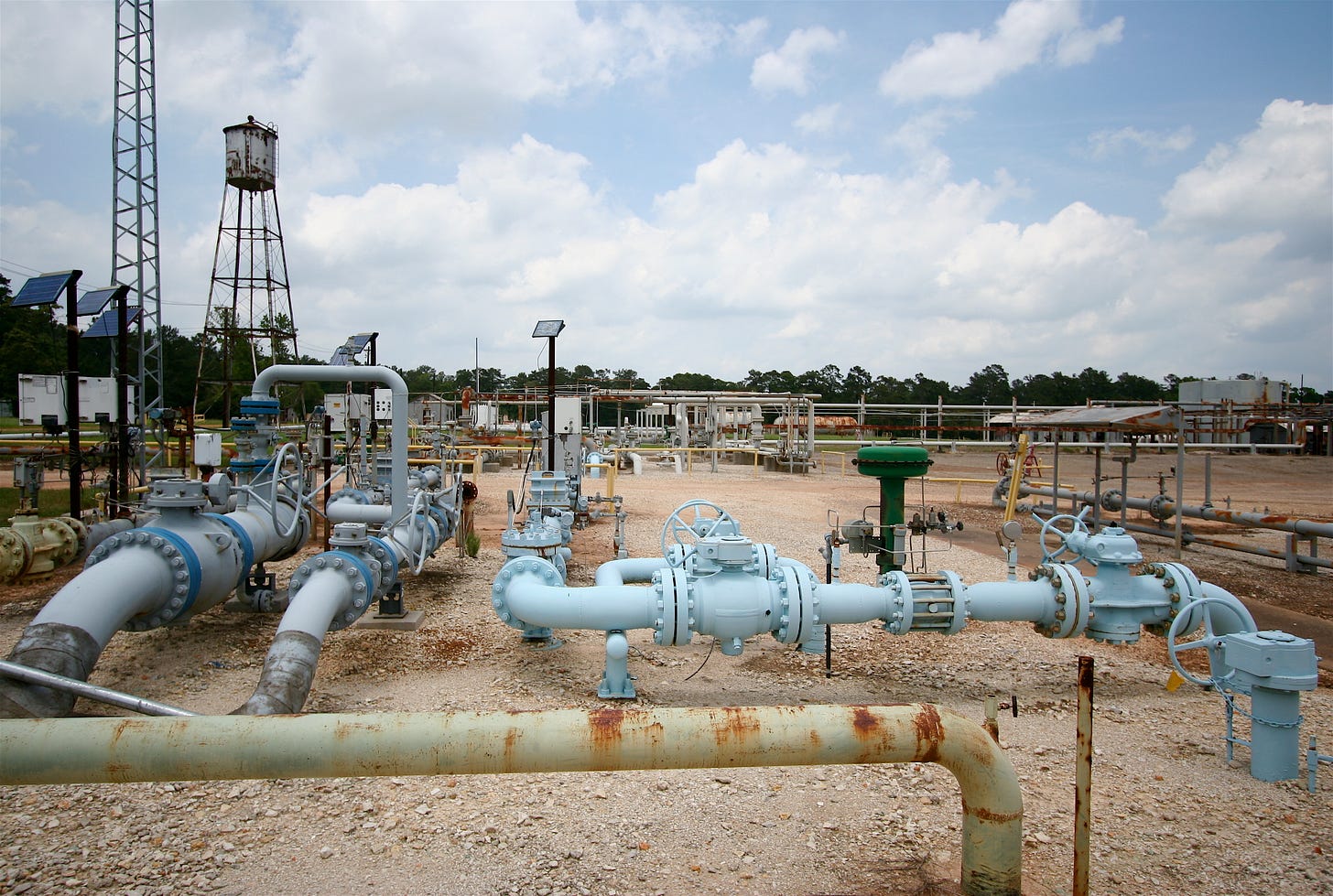The Public Utility Commission of Texas has approved Entergy Texas's proposal to construct two major natural gas power plants, the 754-megawatt Legend Power Station and the 453-megawatt Lone Star Power Station, with a combined investment of $2.39 billion that will provide electricity for more than 300,000 homes in Southeast Texas by mid-2028.
The approval, announced this week, comes with a crucial caveat: regulators imposed a "hard cap" of $2.4 billion on project costs to protect ratepayers, following concerns that Entergy did not conduct a competitive bidding process to ensure cost-effectiveness. The decision reflects growing tensions between Texas's urgent need for more electricity generation and consumer protection amid skyrocketing power demand across the state.
Southeast Texas Energy Boom Drives Unprecedented Demand
The Legend and Lone Star facilities represent cornerstone projects in Entergy Texas's Southeast Texas Energy Plan (STEP Ahead), a comprehensive strategy to address the region's explosive growth in electricity consumption. Entergy CEO Eliecer Viamontes projects that summer peak demand will increase by nearly 20 percent by 2028, driven by new industrial customers, data centers, and population growth in the company's 27-county service territory.
"We've heard directly from our customers and communities about the need for more power to support our rapidly growing region, and these facilities will deliver just that."
Viamontes emphasized the plants' role in strengthening the utility's capacity to serve everyone from "families and business owners to schools and essential services".
The facilities form part of a broader infrastructure buildout requiring an additional 1,600 megawatts of generation capacity by 2028—approximately 40 percent of Entergy Texas's current generating capacity. This surge reflects Southeast Texas's emergence as a significant industrial and technology hub, with companies seeking reliable, around-the-clock power for manufacturing and data processing operations.
Massive Economic Impact Expected
The two power plants promise substantial economic benefits for their respective communities. The $1.6 billion Legend Power Station in Port Arthur is projected to inject $1.79 billion into the regional economy during its construction. In comparison, the $799 million Lone Star facility near Cleveland is expected to generate an estimated $951 million in economic activity.
Combined, the projects are expected to create more than 9,000 construction jobs across the Port Arthur and Cleveland areas, with both facilities scheduled to begin commercial operations by mid-2028. The construction timeline aligns with Entergy's ongoing development of the Orange County Advanced Power Station, a 1,215-megawatt facility that is 70 percent complete and is expected to be online by June 2026.
Regulatory Oversight Addresses Cost Concerns
The PUCT's approval came with significant strings attached following criticism from consumer advocacy groups and industrial customers about Entergy's decision to bypass competitive bidding processes. Texas Industrial Energy Consumers, the Office of Public Utility Counsel, and PUCT staff all raised concerns about the utility's failure to conduct a request for proposals to determine the most cost-effective generation options.
Public Utility Commission Chair Thomas Gleeson acknowledged the necessity of the projects while emphasizing the importance of consumer protection measures. "Entergy has shown a need for this. We want them to proceed," Gleeson stated, "but given the issues with the process, I think it's appropriate to apply a hard cost cap consistent with the costs that they anticipate and estimate".
The $2.4 billion hard cap covers capital costs, including allowance for funds used during construction, representing the maximum amount on which Entergy can seek recovery and return through generation cost recovery proceedings. Jefferies managing director Paul Zimbardo characterized the approval as "constructive," while noting that the cost cap "does introduce risk" for investors.
Environmental Concerns Amid Texas Gas Plant Surge
The Entergy approval occurs against the backdrop of an unprecedented wave of natural gas development across Texas. Environmental Integrity Project analysis reveals that 130 proposed natural gas power plant projects statewide could collectively generate over 58 gigawatts of electricity—enough to power 14.6 million homes during peak demand.
These projects, if built, could emit 115 million metric tons of greenhouse gases annually, equivalent to emissions from 26.8 million cars driven for one year. The Environmental Integrity Project warns that 14 of the 54 proposed plants with detailed location information would be constructed in areas already experiencing unhealthy levels of ground-level ozone pollution.
"To meet its increasing demand for electricity, Texas should be encouraging more clean energy instead of feeding public subsidies to dirty fossil fuels."
Environmental advocates argue that Texas could pursue cleaner alternatives, such as expanding solar, wind, and battery storage capacity, rather than directing taxpayer dollars toward fossil fuel infrastructure.
Data Center Boom Drives Grid Transformation
The surge in electricity demand driving projects like Legend and Lone Star stems largely from Texas's emergence as a national hub for data centers. The Electric Reliability Council of Texas (ERCOT) projects that power demand will increase by 43 gigawatts between now and 2030, with large-load customers, including data centers and hydrogen production facilities, driving the majority of this growth.
Major technology companies have committed to substantial investments in Texas, including Apple's 250,000-square-foot AI server farm in Houston, Meta's $800 million data center in Temple, and Oracle's participation in the recently announced Stargate initiative, which will include 10 data centers already under construction in the State.
According to a McKinsey analysis, U.S. data center electricity demand is expected to grow from 25 gigawatts in 2024 to more than 80 gigawatts by 2030, representing a compound annual growth rate of 23%. Unlike cryptocurrency mining operations, data centers typically require uninterrupted power supplies and do not participate in demand response programs during grid emergencies.
The Entergy projects represent a microcosm of Texas's broader energy infrastructure challenges as the state attempts to balance rapid economic growth, environmental concerns, and consumer affordability while maintaining grid reliability. With both facilities designed to accommodate future carbon capture and hydrogen technologies, the plants position Southeast Texas for potential compliance with evolving federal environmental regulations while meeting the region's immediate power demand from its expanding industrial base.



